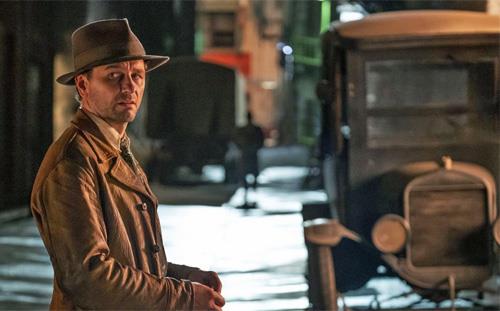
I’ve occasionally wondered whether TV writers take quietly impish delight in messing with the image of long-time pop culture icons.
Like spoiled rich girl Veronica Lodge from the Archie comics becoming the daughter of a crimelord in the CW’s Riverdale. Or wholesome teenage sleuth Nancy Drew, also on the CW, sleeping with her boyfriend.
This contemplation bubbled up again with Perry Mason, the new HBO incarnation of one of TV’s most iconic lawyers.
The new Perry Mason, which premieres Sunday at 9 p.m. ET on HBO, conjures an origin story that deeply darkens everything about Mason himself (Matthew Rhys), as well as his loyal secretary/assistant Della Street (Juliet Rylance) and his go-to detective, Paul Drake (Chris Chalk).
Set in 1932 Los Angeles, the eight-episode story takes the calm, dry, composed Mason enshrined by Raymond Burr on 1950s television and basically turns him inside out. Name a vice or a trauma or a neurosis, and Rhys’s young Mason checks the box.
So you have to wonder whether Rolin Jones and Ron Fitzgerald, creators of this miniseries, were chuckling just a little at the image of a disheveled Perry Mason ranting at the gods before falling down drunk.
Whether they did or not, I should add, makes no difference. Jones and Fitzgerald have created a terrific show, laced with tension, beautifully filmed, and loaded with characters of whom you can’t get enough.
The murder case that comprises the primary plotline could arguably have been compressed into maybe two hours. The case, stripped to its essence, is not unlike those that Burr’s Mason unraveled and won every week on television for nine years (lost only one). Or that he unraveled and won in the 80 Perry Mason books written by Erle Stanley Gardner starting back in the 1930s.
This one doesn’t ignore the case. It just has more on its mind. It needs to explain how a traumatized World War I veteran somehow stops drifting through a Depression, national and personal, and finds a calling.
The trick is not to have Mason’s transformation from marginal private investigator into shrewd lawyer feel like a slick TV gimmick, and toward that end, Jones and Fitzgerald use their eight hours well.
Mason’s evolution feels credible because it happens gradually, and while that might make some viewers impatient, Perry Mason understands the dramatic value of a slow burn.
Both the Mason character and the show are boosted upfront by an older lawyer/mentor, the cranky E.B. Jonathan (John Lithgow), who’s really a costar.
Della Street works for E.B. as things get underway. Drake is an L.A. policeman, one of the first black cops on the force, and is paying the full price for being a pioneer in a place where a whole lot of people don’t want him.
Della faces similar suspicion from the world into which she wants to step. Women were fine as secretaries, but once they started having ideas, they were treading on men’s wingtips.
Rhys’s Mason has too many of his own problems to care much about someone else’s color or gender, making it natural and credible that the three of them would slowly and cautiously form a kind of outsiders’ alliance.
It should be added that the characters and the story still wouldn’t hold together without the help of Pete Strickland, a freelance private eye brilliantly played by Shea Whigham. He wasn’t a presence on the 1950s TV show, but he’s essential here.
The story itself revolves around a child who has been kidnapped and killed – shades of the real-life Charles Lindbergh baby – sending L.A. into a spasm of outrage and a demand that someone pay.
First, the child’s father, Matthew Dodson (Nate Corddry), is arrested. However, he’s quickly released when it is discovered that his wife Emily (Gayle Rankin) was having an affair with the now-dead man suspected of the kidnapping and attempted ransom extortion.
Emily is charged with murder as an accessory. While she denies everything, she’s an elusive character who becomes even more enigmatic when her cause is taken up by Sister Alice (Tatiana Maslany) from a powerful Los Angeles evangelical church.
Sister Alice – shades of the famous real-life evangelist Aimee Semple McPherson – remains on the periphery of the legal proceedings, but has a profound effect on both Emily and public opinion.
The core question, not answered for several episodes, is how Mason can sober up enough to somehow make this his prototype case, where he beats the odds and frees the innocent.
He has a dream about that, a dream with a direct allusion to the signature moment in virtually every one of the Burr TV shows. Let’s assume that’s not a coincidence on the part of Jones and Fitzgerald.
Visually, this Perry Mason evokes the fond memory of Chinatown, another period piece from the days when L.A. was the world capital of the fine art of noir.
But more to the point, whatever its DNA, Perry Mason is a killer of a 2020 television show.